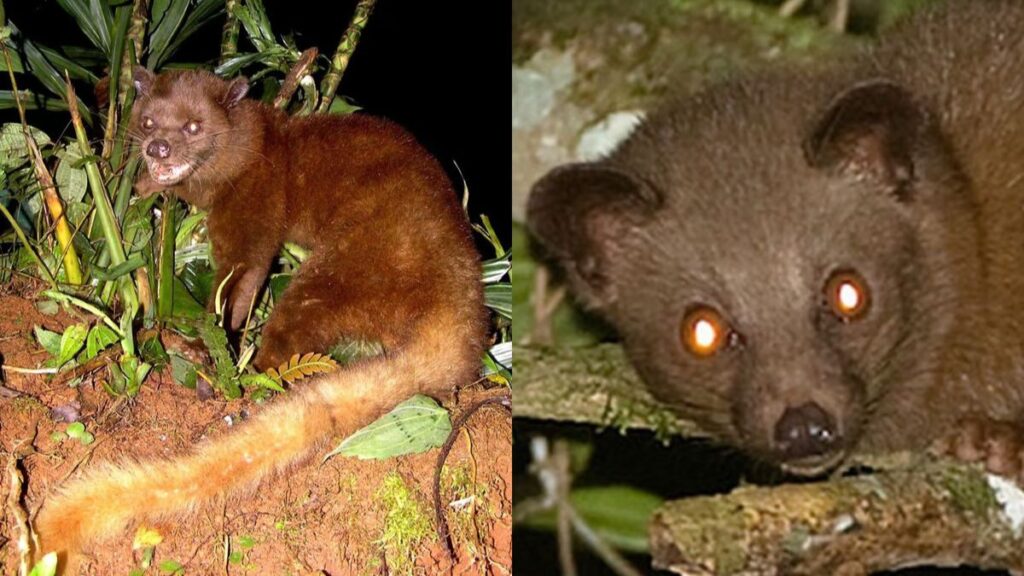Rare Sighting in Koyna Wildlife Sanctuary: Brown ‘Palm Civet’ Spotted

Koyna Wildlife Sanctuary, a haven for a rich variety of flora and fauna, has become the focal point of excitement following a rare sighting in Koyna Wildlife Sanctuary. Over the years, numerous rare species of plants and animals have been observed here. Recently, the Discover Koyna group, renowned for their discoveries of rare owls and butterflies, observed a rare brown palm civet in the sanctuary.
Discovery by Discover Koyna Group
The Discover Koyna group, dedicated to uncovering the hidden gems of the sanctuary, has once again made headlines. This rare sighting in Koyna Wildlife Sanctuary marks a significant addition to the sanctuary’s rich biodiversity. The brown palm civet, also known as Jerdon’s palm civet, is endemic to the Western Ghats and plays a vital ecological role as seed dispersers. In regions where other large seed dispersers are absent or rare due to human activities, these civets help promote the growth of native rainforests.
Importance of the Brown Palm Civet
In a 2021 paper titled “Phenotypic Variations, Habitat Suitability, and Diel Activity of the Endemic Brown Palm Civets,” published in the journal Geology, Ecology, and Landscapes, researchers documented that the brown palm civet inhabits a total suitable area of 21,853 sq km in the Western Ghats. The civets were recorded in four distinct blocks: in the south from Kalakkad to Anamalai, and in the north in the Nilgiris, Bhadra, and Sayadri regions. This study was a collaboration between the Wildlife Institute of India, Sreehari Raman (a small mammal expert and assistant professor from the College of Forestry, Kerala Agriculture University), and forest officials from the Mudumalai Tiger Reserve.
The researchers noted that the brown palm civet primarily resides in:
- Anamalai
- Periyar
- Parambikulam
- Kalakkad Mundanthurai
- Meghamalai Tiger Reserves
- Kodaikanal and Munnar forest divisions
- Srivilliputhur
These protected areas account for a significant portion of the civet’s habitat. The second-most important block is in the Nilgiris, which includes the Silent Valley and Mukurthi National Parks, Wayanad Wildlife Sanctuary, and the Mudumalai, Nagarhole, Bandipur, and Biligiri Ranganatha Tiger Reserves.
Habitat and Behavior
Brown palm civets are solitary and nocturnal creatures. During the day, they rest in various locations such as tree hollows, canopy vine tangles, Indian giant squirrel nests, and branch forks. These day-bed trees are typically large and located in dense, mature forest stands with high canopy connectivity. Occasionally, civets may rest on open branches during the night.
This rare sighting in Koyna Wildlife Sanctuary not only highlights the sanctuary’s role in conserving endangered species but also emphasizes the need for ongoing conservation efforts to protect these unique creatures.








